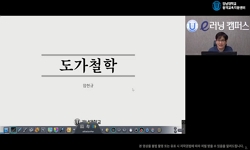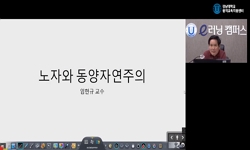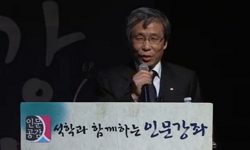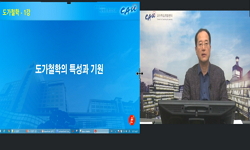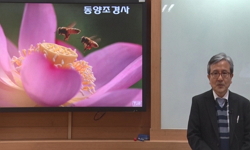This paper has tried to analyze the characteristics of space in Korean traditional architecture by deconstructive concept through connecting Lao-tzu’s theory, the main discourse of East and West, with Derrida’s deconstructionism theory. Derrida...
http://chineseinput.net/에서 pinyin(병음)방식으로 중국어를 변환할 수 있습니다.
변환된 중국어를 복사하여 사용하시면 됩니다.
- 中文 을 입력하시려면 zhongwen을 입력하시고 space를누르시면됩니다.
- 北京 을 입력하시려면 beijing을 입력하시고 space를 누르시면 됩니다.

노자의 미학적 관점으로 본 전통공간의 해체적 특성 연구 = A Study on the Deconstruction Characteristics of Traditional Space Analyzed by Aesthetic Idea of Lao-tzu
한글로보기https://www.riss.kr/link?id=A99626645
- 저자
- 발행기관
- 학술지명
- 권호사항
-
발행연도
2012
-
작성언어
Korean
-
주제어
노자 ; 데리다 ; 해체 ; 도(道) ; 차연(差延) ; 전통공간 ; Lao-tzu ; Derrida ; Deconstruction ; Tao ; differance(differance) ; Traditional Space
-
등재정보
KCI등재
-
자료형태
학술저널
- 발행기관 URL
-
수록면
56-64(9쪽)
-
KCI 피인용횟수
1
- 제공처
-
0
상세조회 -
0
다운로드
부가정보
다국어 초록 (Multilingual Abstract)
This paper has tried to analyze the characteristics of space in Korean traditional architecture by deconstructive concept through connecting Lao-tzu’s theory, the main discourse of East and West, with Derrida’s deconstructionism theory.
Derrida’s philosophical term of differance(differance) is similar to Tao of Lao-tzu. It is because Derrida emphasized the relationships with others by trying the strategy of overcoming dichotomous thinking by this term. Tao of Lao-tzu also has the relative characteristics that cannot be concluded by one sole meaning. Like this, Derrida and Lao-tzu are against traditional and dichotomous way of thinking. In this point of view, this study has set Derrida’s deconstruction theory and Lao-tzu’s thinking as the common viewpoint of this world. And through the phrase of Tao Te Ching which means deconstructive Tao, deconstructive space design vocabulary was derived as mixed no-boundary, shape of no-shape, transcendence of time and space.
The deconstructive characteristics of traditional space by case study analysis of Lao-tzu’s deconstructive space design are as follows: First, it is not a specific or detailed shape but an unlimited possibility that can be transformed into something else, moving and changing endlessly and has a borderless beauty. Second, it is nothing itself but creates various shapes, as if it exists without shape. Third, it is a relative and unlimited space and pursuits a free form as a non-conceptional shape without any system or value.
목차 (Table of Contents)
- Abstract
- 1. 서론
- 2. 데리다의 해체주의와 노자사상
- 3. 노자의 해체주의적 공간조형사상
- 4. 사례를 통한 전통공간의 해체적 특성
- Abstract
- 1. 서론
- 2. 데리다의 해체주의와 노자사상
- 3. 노자의 해체주의적 공간조형사상
- 4. 사례를 통한 전통공간의 해체적 특성
- 5. 결론
- 참고문헌
참고문헌 (Reference)
1 이광래, "해체주의란 무엇인가, 3판" 교보문고 1991
2 Jacques Derrida, "해체" 문예출판사 1996
3 오열근, "포스트모던조직론과 노자의 「道德經」 : 解体(差延)를 중심으로" 한국행정사학회 (26) : 107-155, 2010
4 김형효, "사유나그네, 초판" 소나무 2010
5 김개천, "명묵의 건축, 초판" 안그라픽스 2004
6 박원재, "도와 차연-노자와 데리다의 비교연구" 2 : 2000
7 김형효, "데리다의 해체철학, 초판" 민음사 1993
8 김형효, "데리다와 노장의 독법, 초판" 한국정신문화연구원 1994
9 한귀란, "데리다로 노자읽기" 칼빈대학교 (29) : 2009
10 최진석, "노자의 목소리로 듣는 도덕경, 4판" 소나무 2005
1 이광래, "해체주의란 무엇인가, 3판" 교보문고 1991
2 Jacques Derrida, "해체" 문예출판사 1996
3 오열근, "포스트모던조직론과 노자의 「道德經」 : 解体(差延)를 중심으로" 한국행정사학회 (26) : 107-155, 2010
4 김형효, "사유나그네, 초판" 소나무 2010
5 김개천, "명묵의 건축, 초판" 안그라픽스 2004
6 박원재, "도와 차연-노자와 데리다의 비교연구" 2 : 2000
7 김형효, "데리다의 해체철학, 초판" 민음사 1993
8 김형효, "데리다와 노장의 독법, 초판" 한국정신문화연구원 1994
9 한귀란, "데리다로 노자읽기" 칼빈대학교 (29) : 2009
10 최진석, "노자의 목소리로 듣는 도덕경, 4판" 소나무 2005
11 김개천, "노자의 공간조형사상, 초판" 국민대학교출판부 2009
12 이강수, "노자와 장자, 3판" 길 2006
13 한국도가철학회, "노자에서 데리다까지, 2판" 예문서원 2002
14 Jacques Derrida, "Margins of Philosophy" University of Chicago Press 1982
15 김상래, "J.Derrida의 해체주의와 노장사유의 독법(1)" (18) : 1999
동일학술지(권/호) 다른 논문
-
- 한국실내디자인학회
- 박종혜(Park, Jong-Hye)
- 2012
- KCI등재
-
- 한국실내디자인학회
- 홍제형(Hong, Je Hyeong)
- 2012
- KCI등재
-
로버트 벤투리와 알도 로시 건축에서 도시 경관의 의미와 해석에 관한 연구
- 한국실내디자인학회
- 박형진(Park, Hyung-Jin)
- 2012
- KCI등재
-
- 한국실내디자인학회
- 김원갑(Kim, Won Gaff)
- 2012
- KCI등재
분석정보
인용정보 인용지수 설명보기
학술지 이력
| 연월일 | 이력구분 | 이력상세 | 등재구분 |
|---|---|---|---|
| 2027 | 평가예정 | 재인증평가 신청대상 (재인증) | |
| 2021-01-01 | 평가 | 등재학술지 유지 (재인증) |  |
| 2018-01-01 | 평가 | 등재학술지 유지 (등재유지) |  |
| 2015-01-01 | 평가 | 등재학술지 유지 (등재유지) |  |
| 2011-01-01 | 평가 | 등재학술지 유지 (등재유지) |  |
| 2009-01-01 | 평가 | 등재학술지 유지 (등재유지) |  |
| 2007-01-01 | 평가 | 등재학술지 유지 (등재유지) |  |
| 2005-01-01 | 평가 | 등재학술지 유지 (등재유지) |  |
| 2002-01-01 | 평가 | 등재학술지 선정 (등재후보2차) |  |
| 1999-07-01 | 평가 | 등재후보학술지 선정 (신규평가) |  |
학술지 인용정보
| 기준연도 | WOS-KCI 통합IF(2년) | KCIF(2년) | KCIF(3년) |
|---|---|---|---|
| 2016 | 0.45 | 0.45 | 0.45 |
| KCIF(4년) | KCIF(5년) | 중심성지수(3년) | 즉시성지수 |
| 0.45 | 0.42 | 0.758 | 0.19 |





 ScienceON
ScienceON DBpia
DBpia